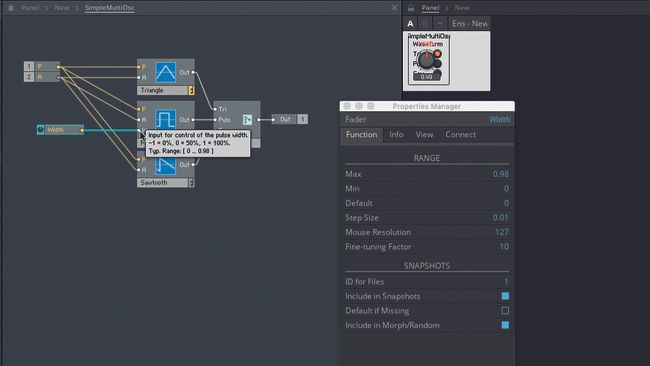

"Out of the box, you get 30 prefabricated Blocks divided into eight folders." It feels like NI has missed a trick in terms of potentially making Reaktor more accessible to casual synthesists, though - the addition of virtual cables in the Panel view (where the final Instrument interface is displayed) would have made everything much more immediate and user-friendly. They work just like regular instruments, patched up in Reaktor's Structure view just like everything else in the software. If you're familiar with Reaktor, getting to grips with Blocks isn't too tricky. Perhaps unsurprisingly, their focus has been on explaining how Blocks make Reaktor 6 akin to having an enormous modular analogue synth in your laptop - more on that later. NI certainly hasn't gone out of its way to make it clear what Blocks actually are, nor that they're only capable of delivering monophonic results thanks to Reaktor's current inability to send polyphonic information between Instruments. "The main thing that Reaktor 6 adds to the mix is the modular hardware-like Blocks." These aren't a new hierarchy strata like Core was rather, they're an Instrument specification - a sort of equivalent of Doepfer's A-100 (more commonly known as Eurorack) hardware spec. (Image 30) So now the gate triggers the envelope and we have 4 UI controls for the envelope.The main thing that Reaktor 6 adds to the mix is the modular hardware-like Blocks. Connect the Gate output to the G input on the ADSR Env, then right-click on each of the 4 inputs (A,D,S & R) and select Create Control. Make sure you’re on the Instrument page, then right-click in the background of the structure view and select Built-In Module > LFO, Envelope > ADSR. The most common envelope being the ADSR envelope. An envelope will give you more options to shape the amplitude in different ways. Now when the amplitude is triggered by the Gate object, when you play a note the amplitude of the oscillator jumps to the maximum. Unlike an analog synth or a Eurorack system where you have a dedicated VCA, in Reaktor the amplitude can be controlled directly on the oscillator module itself, like we have already seen. Amplitude Envelopeīelieve it or not, we are still working on the oscillator section. You should be able to tweak all the 3 oscillators and hear them. Connect the NotePitch output to the other input of the Add module and connect the output of the Add module to the P input of all the three oscillators (Image 19).īring down the master level and play the synth. Double-click the name of the dial and rename it to Coarse.



As we now know, Reaktor will create a dial. Right-click one of the inputs of the Add module and select Create Control. Right-click in the background of the structure view and select Built-In Module > Math > Add. All we need to do is add 12 to the NotePitch data and the resulting pitch will be transposed an octave above. Let’s say we want to change the pitch to an octave above the played note. Later on in this article we will be duplicating the oscillator section, so it would be nice to have the ability to tune them differently.Ĭurrently the pitch is controlled by the NotePitch object, but we can add or subtract the data coming from that object with a constant value to offset the pitch. We have most of the working components of an oscillator section but it would be nice to have some kind of pitch control.
REAKTOR SYNTH PROGRAMMING CLASS SERIES
Read the entire series on building a synth in Reaktor: Part 1 / Part 3 / Part 4 / Part 5 Oscillator Tuning


 0 kommentar(er)
0 kommentar(er)
